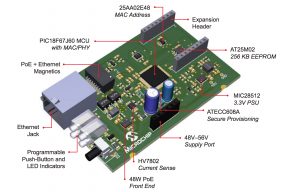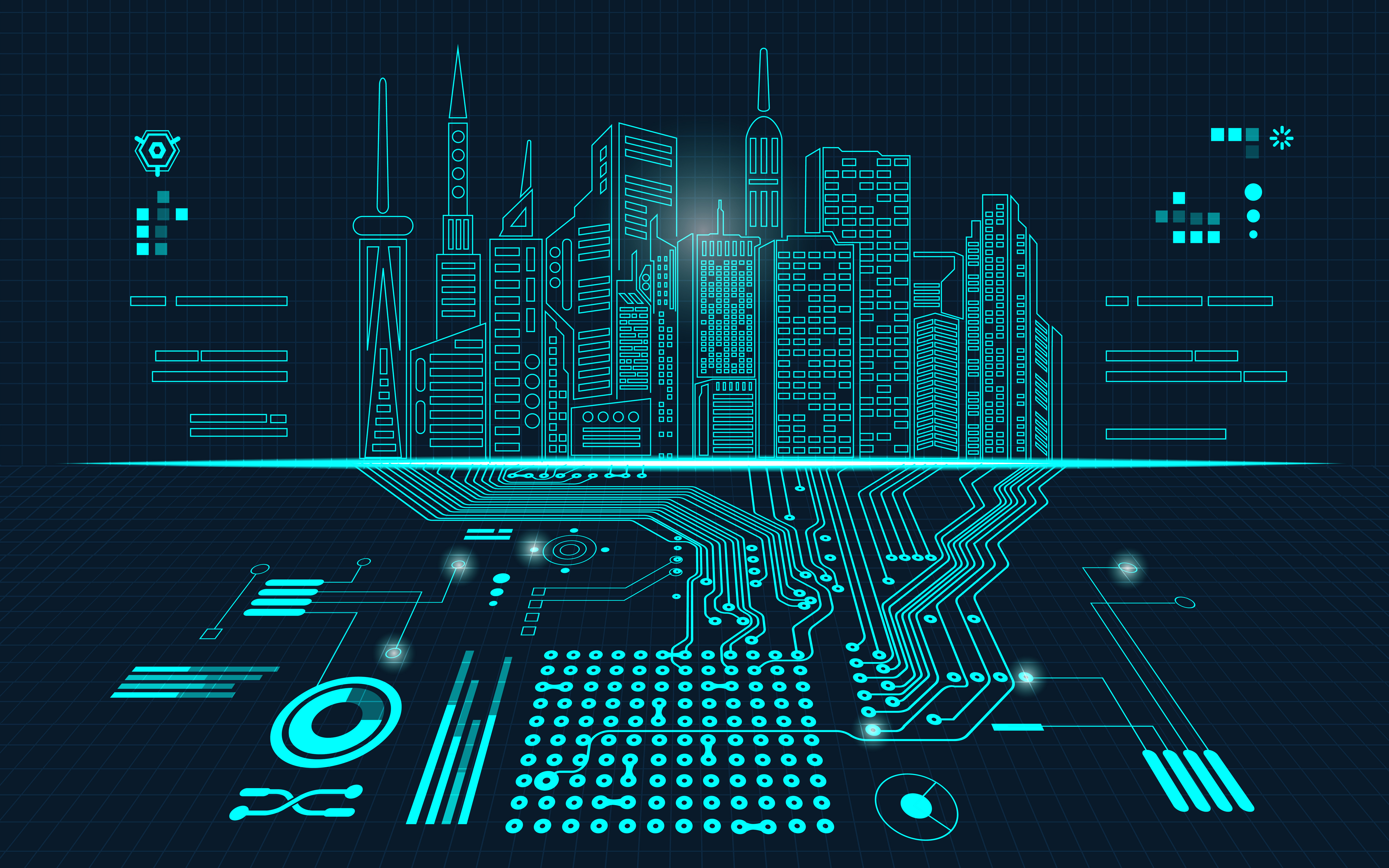Mark Patrick at Mouser Electronics Europe discusses the challenges and advantages of the digital building and how a major industry initiative is helping with the convergence of disparate control systems to enable the concept
Driving Factors
The ongoing digital transformation is having some profound effects on the way we live and work. Undoubtedly, we are more connected than ever before with a plethora of smart consumer devices available to us both at home and at work. The smart connectivity of buildings should therefore be central to this transformation: but the reality is something else. While the ‘digital building’ has been a multi-heralded concept for some time, implementation is more problematic. Historically, building controls for sensors, lighting, HVAC and security have been based on standalone systems that are most likely to be completely isolated from each other; and it has always been a significant challenge to control and interface entirely different control mechanisms, each coming with its own proprietary protocols. In addition, the growth in the number of networks and connections within buildings means the task to manage all these disparate systems is becoming increasingly complex.
There are an increasing number of commercial drivers that are becoming crucial in dictating the operation of a building. The smart building concept has certainly been responsible for informing building service providers of the need to take a more holistic approach to managing utility services, and particularly that of energy. In addition, there are increasing burdens for facilities managers to cope with costly building maintenance, managing network infrastructure and delivering security. Consequently, there is strong demand for efficient and smart solutions that can deliver greater control to facilities managers and enable new ways of saving costs for businesses, in addition to providing better working environments for people. The smart building can offer a much higher return on investment (ROI) in the long term, helping for example to help dramatically reduce annual energy costs. A smart building infrastructure can also enable better collaboration with voice, unified communications and data services to significantly boost business productivity.
Convergence Possibilities
However, all this will require a holistic approach to integrating new technologies to realize the vision for smart buildings. Undoubtedly, convergence into a single system will be fundamental to the digital transformation of buildings. This has traditionally been the biggest barrier to realizing the full potential of a digital building. But convergence has to be implemented at the technology layer, including both wired and wireless communications, as well as at the protocol layer.
Networks widely used in buildings will typically be based on a variety of communications technologies including Wi-Fi, Bluetooth/BLE, Zigbee and Z-Wave, as well as wired options such as Ethernet or RS485 and other serial lines. However, IP-based protocols such as CoAP (Constrained Application Protocol) offers a standard protocol for lighting and other typical building services. It is driving convergence in the IoT (Internet of Things) and in the areas of smart energy and building automation. In addition, convergence to IP technologies such as Power-over-Ethernet (PoE) is also is fast growing, especially with the development of standards including IEEE802.3.bt and Cisco’s Universal PoE (UPOE).
The UPOE standard, for example, provides up to 60W per port, which supports approximately 90 percent of industry lighting requirements for indoor buildings, as well as high-luminosity applications in retail and manufacturing environments. When historically dumb devices such as lights for example are equipped with sensors to become IP network endpoints, they can become collectors that deliver information on occupancy and usage, or environmental data such as temperature or humidity levels.
This type of innovation in low-voltage PoE LED lighting, for example, is accelerating the transformation of building systems by decreasing installation and operating costs, via the implementation of smart automated systems that offer features such as daylight harvesting, motion detection and smart shut-off. In addition, energy savings delivered using LED and PoE technologies can help developers and owners of buildings meet building codes such as the International Energy Conservation Code.
Cisco’s Approach
One important approach in the industry comes from Cisco with its recently announced ‘Digital Ceiling’ framework initiative offering advanced building technologies and solutions. Essentially, it is designed to make building smarter through optimized lighting, increased automation and the deployment of Internet of Things (IoT) technology to converge standalone systems into one IP-based platform. The company’s first step has been the launch of its Catalyst Digital Building Series Switch. The product has been designed specifically for powering and connecting multiple standalone building subsystems – such as lighting, air conditioning, temperature control, and security systems – onto a single unified low-voltage and IP-based Power-over-Ethernet network that can deliver high levels of security, as well as easy installation and management. A key feature of the device is its interoperability – the product is based on CoAP, which establishes a common language for lighting, HVAC, audio-visual and security access systems. As well as being very easy to install, other key elements include a fan-less design and a range of integrated security features such as segmented application networking and continuous policy-based threat protection.
Importantly, Cisco has built up a partner ecosystem for its digital building solutions, working with key manufacturers and suppliers in various fields including lighting, power, control and automation systems, connectivity and cabling infrastructure, and very importantly, leading semiconductor companies, which are already supporting Cisco’s initiatives with compliant devices.
Compliant Devices
A key example is the PIC18 Power-over-Ethernet (PoE) development platform from Microchip Technology. Enabling participation in Cisco’s Digital Building Ecosystem, it is a modular system that provides a universal reference design for the easy development of applications based on a PIC18 microcontroller and TCP/IP library, including CoAP. The PoE main board is offered as a stand-alone device and as part of the PIC18 PoE platform, which delivers high flexibility and scalability to developers by enabling them to combine the PoE board with a range of different extension boards that match the requirements of the application.


Microchip’s PIC18 based Power-over-Ethernet main board
An example extension board in the platform – targeting LED lighting applications – is a single-channel LED driver board. This integrates Microchip’s HV9861A average-mode constant-current-control LED driver IC, which delivers excellent accuracy, line and load regulation of the LED current without any need for loop compensation or high-side current sensing. Offering dimming from 0% to 100% and pre-configured for a 12W LED array, the extension board can run LEDs from 10W up to 45W via the simple adjustment of a sense resistor and inductor.
Tying in with the Microchip PoE development platform are technologies from Cree Inc., another key partner for the Cisco initiative and a leading innovator in the LED semiconductor lighting field. In particular, Cree’s SmartCast Intelligence Platform combines the company’s advanced PoE LED lighting network with innovative analytics software, enabling the collection of data acquired from integrated lighting sensors to provide energy recommendations that can lower maintenance costs and improve productivity. Essentially, the platform eliminates the need for separate data and high-voltage power connections by providing power and networking for lighting via Ethernet cabling. All Cree’s SmartCast lights, switches and dimmers are compliant with Cisco’s PoE-powered network architecture.
Enabling Digital Buildings
Major commercial initiatives from major networking infrastructure companies such as Cisco, the development of key standards and communication protocols – Power-over-Ethernet and CoAP, for example – an


Mark Patrick, senior marketing roles at RS Components.
d new products and technologies from market leaders such as Microchip and Cree are all combining to make the digital building concept a reality. One that can provide building owners and businesses with the ability to deliver comfortable living and working environments that offer high energy efficiency, higher productivity and significantly reduced costs over the long term.







